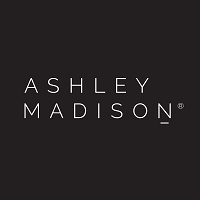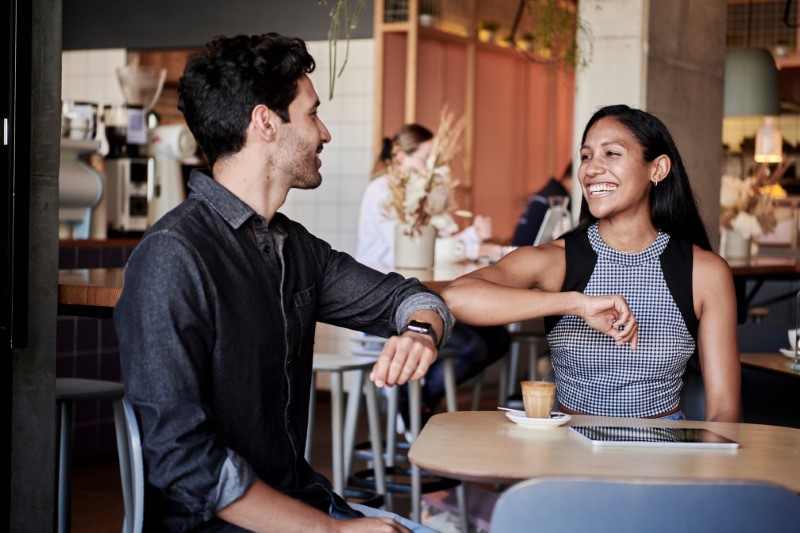Let’s face it, dating is hard: trying to find the “right” person, avoiding the “wrong” ones, and dealing with all the emotions and uncertainty that unfold can be challenging and exhausting.
But much of this can be alleviated simply by knowing your attachment style, as well as the styles of your dates.
Attachment Styles: What They Are and Their Role in Dating
Attachment styles are our unique maps for navigating relationships. Our style, typically without us being aware of it, informs our beliefs, attitudes, expectations, and behaviors in relationships.
These attachment styles are typically developed in early childhood based on the bond we had with our primary caregiver. For most of us, that caregiver was a parent. However, our attachment styles can also be influenced by other intimate relationships throughout life.
In Attached: The New Science of Adult Attachment, a popular book by Amir Levine and Rachel S.F. Heller on attachment theory, attachment in a close relationship is said to be something that humans are wired to need and seek based on our genes.
Interested in more concepts of love? Check out our article on the five love languages and how they influence your dating life.

If close relationship bonds were easily formed in secure relationships with caregivers and in other relationships, we may be more likely to have a secure attachment style.
But if previous relationships lacked attention, responsiveness, or attunement to our emotional needs, it’s more likely that we might develop an insecure attachment style.
These attachment styles often play out in dating and romantic relationships. Securely attached people have a secure base from which to create healthy relationships, without a fear of intimacy nor a fear of abandonment.
However, for other less secure styles, relationship struggles of the past often repeat themselves in their love lives and dating experiences.
Serious dating recommendations
Here are our top recommendations for serious dating services. Check them out today!

- Expert in finding a lasting relationship for you
- For mature and younger singles looking for love that lasts
- If you're looking for matches with serious intentions, you're in the right place!

- Meet your crush, friends and lasting love
- Free membership and Free registration!
- Engaging flirts guaranteed!

- Free registration
- Verified members
- A modern and user-friendly interface
- Members who are looking for hookups
- Safe and secure

- Best for: finding friends with benefits only
- Free membership: Free registration, limited
- Users: 70,000

- Best for: Singles looking for no strings attached fun
- Free membership: Free registration, limited
- Users: 54 million

- Large database of verified & attractive Asian and European singles
- Efficient communication tools for real relationships
- Top-level safety and professional support

- A dating site that allows you to meet beautiful Asian, European and Latino singles
- Real-time communication with efficient tools
- Professional dating services
The 4 Types of Attachment Styles
Our relationship beliefs and habits can vary greatly depending on our attachment style. There are four attachment styles: one is secure, while the other three can be considered insecure (though they each have different characteristics and tendencies).
Getting to know your attachment style based on a few key signs is the first step to developing a healthier love life and more fulfilling adult relationships.
Secure
Secure attachment is the most common type of style, and it comes with many advantages in dating. For secure people, dating is typically a positive experience. Getting to know others is fun, and trust is established relatively easily.
If you’re secure, you likely don’t worry much about receiving validation from dating, nor do you feel much anxiety in your love life. You can communicate openly, set boundaries, and turn down a second date when necessary – all without too much stress.
And if you have a secure attachment style, you likely already have a life you enjoy – and dating simply adds to that. You’re not seeking a partner to complete you, but you’re open to a relationship once you meet the right person.
Anxious-Preoccupied
Anxious-preoccupied attachment style, also referred to as anxious attachment style, is more common in those who deeply crave connection and emotional intimacy. Anxious people date to find a serious, committed partner.
You may be anxious-preoccupied if you find that you need constant reassurance in relationships. You put a lot of focus on finding a trustworthy partner, and perhaps even more focus in trying to keep them, causing you to be a people pleaser.
In anxious-preoccupied attachment, there’s often a fear of abandonment and rejection. However, this isn’t the only style with this worry: fearful-avoidant struggles with similar anxieties, too.
Dismissive-Avoidant
Dismissive-avoidant attachment style, often called avoidant attachment style, is marked by a fear of intimacy and a strong need for self-protection.
If you’re dismissive-avoidant in dating, you probably find yourself clinging to your space and independence as much as possible, and you may feel tempted to pull away from romantic partners quickly.
For avoidant types, you may date because you do like the idea of having a relationship and getting to know others. But too much emotional closeness might make you uncomfortable.
You may also have a tendency to take a “grass-is-greener” approach when choosing partners, often fantasizing about other people or fearing settling for the wrong person.
Fearful-Avoidant
Fearful-avoidant attachment, or anxious-avoidant attachment, combines some of the fears of both anxious-preoccupied and dismissive-avoidant attachment styles.
This style often struggles with wanting emotional intimacy while also craving the safety of holding distance in relationships. If you are fearful-avoidant, you might find dating to be an anxiety-inducing experience, and trusting others may not come easily.
How Does Your Attachment Style Affect Your Dating Life?
Because attachment is such a key part of romantic and intimate relationships, it makes sense that our attachment styles can have a major impact on our dating lives.

Attachment theory says that our attachment style offers the blueprint for how we feel about dating and relationships, as well as how to respond to others. And our level of attachment security can directly affect our dating experiences.
Securely attached people navigate dating with relative ease, but this doesn’t mean that they are flawless. Secure types still have their own shortcomings and mistakes when it comes to dating.
However, overall, they date with confidence and self-assurance. They know what they deserve, and they can weed out people who they can’t build a healthy relationship with.
If you’re more anxious in relationships, such as in anxious-preoccupied and some fearful-avoidant styles, you might spend dates trying to convince the other person you’re worthy of their love and commitment, though you may not believe that to be true yourself.
And if you’re more avoidant, such as in dismissive-avoidant and some fearful-avoidant styles, you may expect the other person to try to convince you why they’re worthy of your love and trust in them. You may search for flaws and red flags on dates, even where there are none.
Are you a highly sensitive person? Then here are some challenges and tips you will need to know for dating successfully.
Can You Change Your Attachment Style?
Whether you’re anxious, avoidant, or a combination of both, you may find that your attachment style is having a negative effect on your dating life.
Thankfully, there are ways you can actively work to show up more securely in adult relationships – and it’s possible to even change your attachment style completely over time!
In fact, it’s possible for one person to have more than one attachment style, depending on the relationship.
For example, you may be secure in your friendships, yet anxious-preoccupied in romantic relationships. Or you may be secure in dating, yet dismissive-avoidant in strained family relationships.
That’s why it’s important to find romantic partners that complement your attachment style and encourage a more secure attachment. When dating an incompatible attachment style, you may find that the other person actually triggers more insecurity in you, and vice versa.
Which Attachment Styles Are Compatible – and Which Aren’t
In order to have the most secure relationship, you may be wondering which style you should seek when dating. And the answer is pretty simple:

To have a secure and stable relationship, you need secure partners. That means working on yourself if your attachment style is insecure, and it also means dating others who are secure.
So, whether your attachment style is secure, anxious-preoccupied, dismissive-avoidant, or fearful-avoidant, your safest bet for a dating partner is someone else who is securely attached.
The worst attachment pairing, on the other hand, is with an anxious-preoccupied partner and a dismissive-avoidant partner.
In this type of relationship, the anxiously attached partner is actively pursuing the other for connection and reassurance, while the avoidant type typically pulls away and prefers a high level of independence.
Because these two styles of attachment are practically polar opposites, their needs tend to be incompatible and can lead to greater conflict and insecurity in the relationship.
Decoding a First Date’s Attachment Style
To increase your chances of having a happy, healthy future with someone, there may be a few clues to look for even on a first date.
However, be aware that you likely can’t determine someone’s attachment style with 100% certainty from just one meeting. After all, first dates are stressful and can bring out the inner insecurities and fears of even the most securely attached people.
Still, you may be able to see some characteristics of different attachment styles in action during your first date.
- A securely attached date will likely have a positive, level-headed attitude about the date and getting to know each other. They may ask you basic questions and be an active part of keeping the conversation going, and they won’t make any declarations of love too quickly.
- Anxious-preoccupied types may seem to move a little too quickly, and they might try to create deep emotional intimacy during the first date. For example, they may discuss personal topics or talk about their emotional and mental health, even before getting to know each other much.
- Dismissive-avoidant dates may hold back or even seem a little distant. They are also more likely to complain about an ex or a previous date compared to secure or anxious types.
- Finally, fearful-avoidant types may be less consistent with their behavior, both on a first date and throughout a relationship. They may seem open and interested one moment, and then pull away and grow quiet the next.
When on a first date, keep in mind that many signs of attachment style become more obvious as intimacy and familiarity increases.
Regardless of attachment style, people tend to try to seem as secure as possible early in dating.
If you’ve ever dated someone who suddenly started pushing or pulling away after a few dates, it’s likely that their true attachment style was starting to show. And it’s usually at this point that we begin acting from our learned protective behaviors.
If you sense that a date is anxiously attached, try to remain reassuring throughout the date, and text back often as you get to know each other.
If you sense that a date is more avoidant, take it slow and give them space early in dating.
Where to Find a Serious Partner Based on Your Attachment Style
If you’re looking to find a partner who’s compatible with your attachment style, try using dating apps and sites geared towards serious dating.
When you date with the intention of creating a serious, committed relationship, you can work to build a secure relationship with someone you feel comfortable with – and by doing so you can learn how to have a healthy, secure attachment style, too.